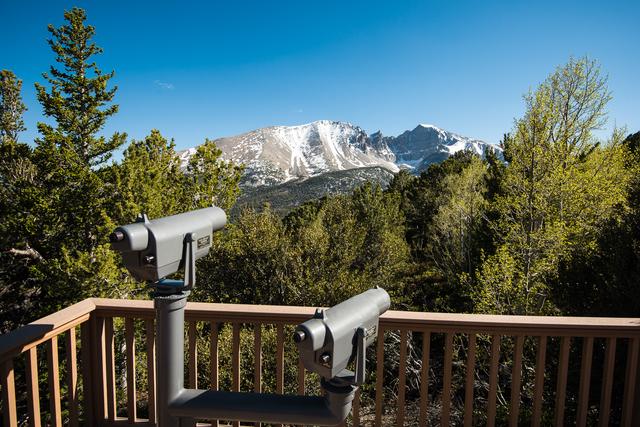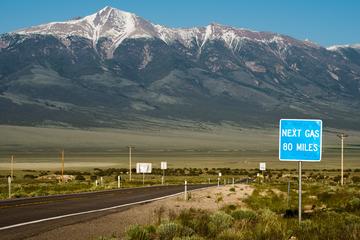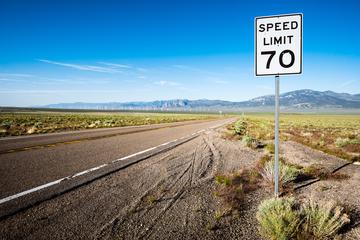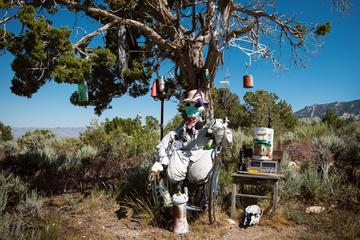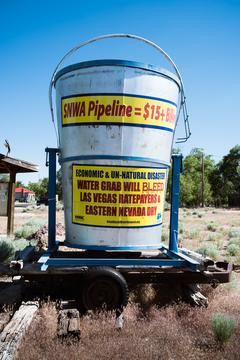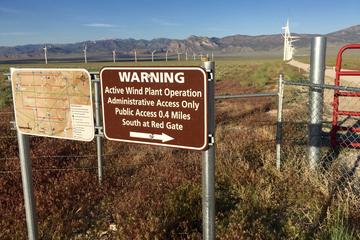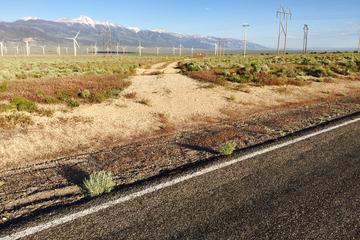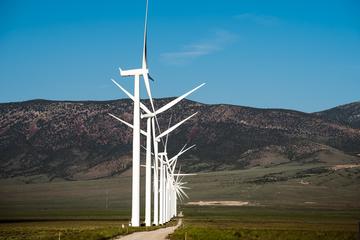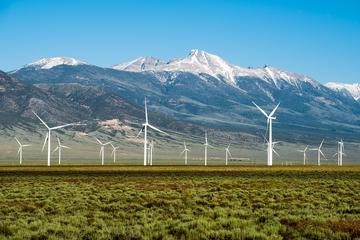Next Gas 80 Miles
Nevada is a large and empty place. You have to plan your gasoline stops. Don’t expect cellular service. Bring water, just in case.
Interstate 11, the plan goes, will eventually connect Las Vegas, in the south, with Reno, in the northwest. Or something. Someday. There’s not even a firm route yet. For now, you’re on two-lane highways, mercifully empty save the inevitable, annoyingly slow tractor-trailer.
Northeastern Nevada is even emptier: White Pine County is roughly the size of New Jersey, with a population of around ten thousand. As you’re driving the hour from your hotel room in the little town of Ely to Great Basin National Park, you won’t see a lot apart from scenery. You’ll see a few abandoned buildings. There’s a nice alien on the side of the road. In the tiny town of Baker, you might see a political statement.
You’ll also pass through a valley, miles across, and in it, the Spring Valley Wind Farm.

Windmills against a backdrop of snow-capped mountains are pretty cool, so I wanted to get a closer look. That’s where the trouble started.
There are nice, well-maintained dirt roads into the wind farm, but the gates are posted “administrative access only.” For public access, the signs directed me down the road to another gate. The “red gate,” it said, though all of the gates were actually red.
When I arrived at the public entrance, I was not greeted with another well-maintained dirt road. The public access road was a soft dirt track, unusable by a normal car, without even a graded entrance from the paved road. To reach the gate you’d have to drive through the roadside ditch and through the dirt; beyond the gate, you’d proceed on two tire ruts with no grading at all. Without a four-wheel-drive truck this road is useless.
I guess this is their way of saying “we had to say we’re providing public access, but really, we don’t want you here.” More to the point, the wind farm was built on 8,565 acres of BLM-managed federal land—with only 756 acres of it actually used by the infrastructure—and according to the proposal document, “Public access roads would incorporate existing BLM standards regarding road design, construction, and maintenance… Additionally, any public access roads would conform to all applicable county road regulations, as well as the Nevada State Fire Marshal’s fire safety regulations.”
I’m not familiar with White Pine County’s road regulations, nor the State Fire Marshal’s, but I can’t imagine that road complying with either.
I guess that’s what happens when you let a private company use public land.
